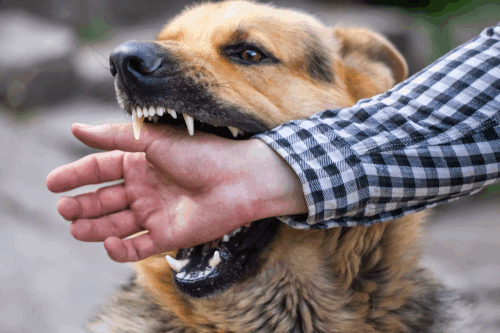Animal bites from pets, wild animals, or insects can pose serious health risks if not treated quickly. Learn how to manage bites from dogs, cats, rodents, spiders, and snakes at home. Learn about symptoms, treatment options, and when to seek professional care.
Recognizing Animal Bites and Symptoms
Animal bites may occur for various reasons, and the severity of symptoms can vary depending on the animal and the type of bite. Common symptoms of animal bites include:
- Redness and swelling around the bite area.
- Increasing pain or tenderness.
- Pus or drainage from the wound.
- Fever or chills.
- Swollen lymph nodes.
- Red streaks spreading from the bite.
Early recognition of these symptoms is beneficial to prevent complications, such as infection or systemic illness.
Treating Cat and Dog Bites
Animal bites, whether from dogs or cats, require prompt attention to reduce the risk of infection. Start by cleaning the bite area thoroughly with mild soap and running water for at least five minutes to remove bacteria. After cleaning, disinfect the wound with an antiseptic solution and apply an antibiotic ointment to help prevent infection. Cover the area with sterile gauze or a clean bandage to keep it protected.
Watch for signs of infection, such as redness, swelling, or drainage. Cat bites, in particular, can penetrate deeply and carry a higher risk of bacterial infections, such as pasteurellosis, and may require antibiotic therapy. If the animal is unvaccinated or unknown, consult a healthcare provider to determine if a rabies vaccination is necessary. Always seek medical advice for deep or severe wounds.
Addressing Rodent Bites
Rodent bites, often from rats and mice, can lead to infections like rat-bite fever, so quick action is needed to reduce risks. Start by washing the bite area thoroughly with soap and running water to clean it. Then apply an antiseptic, such as hydrogen peroxide or an alcohol-based solution, to disinfect the wound. Check if your tetanus vaccination is up to date to avoid further complications. If you notice symptoms like fever, chills, or severe pain, seek medical attention right away to treat possible infections.
Handling Spider Bites
Spider bites generally cause minor irritation, but can become more serious if they are from a venomous species. Basic care involves cleaning the area with soap and water to reduce the risk of infection, applying cold compresses to alleviate swelling and pain, and monitoring symptoms for any unusual reactions, such as significant swelling, fever, or necrotic tissue. While non-venomous spider bites often heal on their own, bites from dangerous spiders such as black widows or brown recluses require medical attention.
When to Contact a Medical Professional
Prompt medical evaluation is recommended for bites exhibiting these characteristics:
- Persistent redness, swelling, or warmth.
- Pus or foul-smelling discharge.
- Fever, chills, or systemic symptoms.
- Deep tissue involvement or visible foreign objects embedded in the wound.
- A bite from an unknown, wild, or venomous animal.
Protect Yourself After an Animal Bite
Animal bites can have serious implications if not managed properly. Cleaning the wound, monitoring for symptoms, and seeking timely medical treatment are necessary measures to minimize complications. For expert care and more tailored advice, visit your local emergency medical facility. If you’re uncertain about the severity of a bite, it’s better to consult a healthcare provider.


Leave a Reply